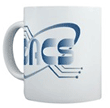SIGNIFICANT BITS: by Sean N Henderson October 2007 Revision: 1.5 There are a number of tools available to upgrade a hard drive and a fair number of ways to go about it. Some of these are more obvious than others. Recently, I upgraded my laptop's hard drive to a 7200rpm model from a 4200rpm one. The reason for the upgrade was to make my laptop more capable in music production. Here's how I went a about it. My goal was to have all the data on my current drive on my new drive, and hopefully a couple extra new partitions for dual-booting into Linux. My other goal was not to use Norton Ghost because I had real problems using a previous version of Norton Anti-virus and never got the support needed from Norton/Symantec. It didn't seem logical to give more money to a company that didn't solve my problems with their software. PREPARING TO COPY Originally, my process was supposed to make a complete backup to a couple of DVDs, then restore onto the new hard drive from these DVDs. I had a feeling that this would be too simple, and I was correct. None of the backup software available to me could accomplish this task, including various copies of Veritas Simple Backup. For those that have seen the stacks of software discs in my collection and my knack for finding utilities on the net, this is ... significant. My backup plan (pun intended) was to put my laptop drive in a USB chassis then copy back into the new drive. This turned out to be the best way to do it, though it took me a couple tries to get the methodology and software right. The bit tip here is to make sure the USB chassis supports the type of drive you are using. A co-worker recently attempted the same upgrade. He was shipped a drive with a blade connector rather than a pin-bank. He never checked his internal drive and trusted IBM to ship him the correct drive. That didn't happen. SOFTWARE The first program tried was XXCOPY. Despite what one would think it was supposed to do, it in fact did not copy all the programs from the system directories. Several more attempts were made using different options and after the good part of a Saturday afternoon of semi-attended work, another option was sought. Using XXCLONE was the final solution. The GUI was simple enough to understand, it ran unattended, and after copying and booting with the new drive, it gave a congratulatory message that everything worked well. Perfect! RESULTS Was it worth the upgrade? Yes. My laptop is so much faster all around, not just for music applications. Yes, I could have gotten a hard drive with more capacity, but speed was more important. Would I recommend XXCLONE to others? Sure. The software worked correctly the very first time I used it. I didn't have to read any manual or mess with any bizarre program options. If you're a user doing what I did, XXCLONE is a great solution. If you're doing a lot of drive image work for an IT department, another tool might be better. From the result window of XXCLONE, it seemed that there may be a finite number of copies it would do of the same drive, but since I needed a program like this only once, I didn't bother investigating that any further. |
Mugs and more, visit CafePress to order
